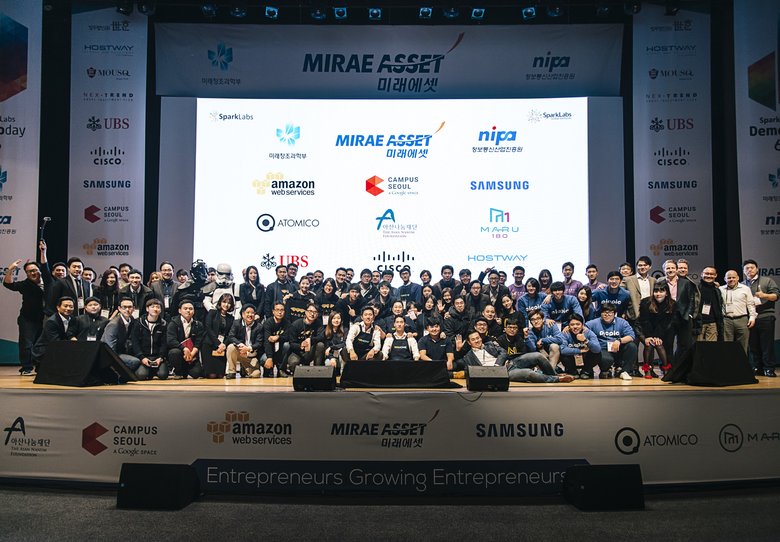South Korean Startups
Step on Gas
Breakthroughs in technology in South Korea have
turned the country into a seedbed for startups.

A country in which large firms still rule
the roost, Seoul’s startup sector is flourishing all the way.
The western hemisphere of Seoul has a nine-storey
edifice covered with vibrant colors and an enormous red bull sculptured outside
houses over and above 100 startups. Ranging from single-hand activities being
managed only via a locker and a laptop on the ground floor, sprawling to fully
developed and functional offices on the higher storeys, this startup hub in
Seoul has been holding 1,282 operations through different phases of growth in
the last two years.
It has all the essential features are
part and parcel of all startup hubs across the world – common cafeteria and work
premises, a relaxation space with beanbags and oval-shaped settees, a modular kitchen
with all the modern amenities for food science firms, a broadcast studio, a reading
room-cum-book repository, a shaft separating two floors and even a convenience
store for those working through late hours.
Approximately 467 accelerators, venture
capital funds and government establishments backed startups in Seoul and its neighboring
states in 2018, a few were supported by large firms like Samsung and Naver. In
all, Seoul alone has 85 accelerators and its angel investment has soared from
US$170m ($250m) in 2015 to US$250m in 2017.
According to Forbes, since 2015, the
South Korean government’s aid to startups has reached $4bn; the biggest per
capita government aid to startups in the world. By 2022, Seoul endeavors to feature
among the world’s top five startup cities.
Startups especially prefer Korea for its
high-speed internet, fast implementation of the 5G network and its super
absorption capacity of technology. The pursuit for startups is being fueled by a
gradual shift from the standard big firms.
North and South
Korea Soccer it Out in Pyongyang, after 30 Years

For the first time since
30 years, North Korea played South Korea at men's football in
Pyongyang.
The FIFA World Cup Qualifier match on
Tuesday, at Kim Il-Sung Stadium, ended in a 0-0 draw.
Previously,
the two sides played a friendly match in 1990, after which they had met in
Japan in the 2017 East Asian Cup when South Korea beat North Korea 1-0.
Though both nations are
soccer lovers, the draw spells positive for North Korea as the South is already
at number 37, higher than the North (ranked 113) in the world ranking.
However, South Korean
media and spectators’ presence was barred from the game and there was no live
streaming either. Only FIFA's website could be accessed periodically for the
latest scores.
According to a
spokesman for the South Korean Unification Ministry, officials had called upon the
North to permit access and transmission, but the request was ignored.
Apart from South Koreans,
even foreign tourists who were in North Korea to see the match were disallowed from
attending, as stated by various tour managers.
South Korea has won
entry to FIFA world cup many times and made it to the semifinals of the FIFA
World Cup in 2002. Comparatively, North Korea’s best was reaching the
quarterfinals in 1966.
Both teams have to
retain their top positions in this qualifying round to reach the next qualifier
and boost their hopes of reaching the 2022 World Cup. Hypothetically, both
teams stand a chance.
South Korea launches
KF-X Warplane Prototype
The first larger-as-life
prototype of the KF-X fighter jet was exhibited by South Korea. The country is
crafting this mock-up in collaboration with Indonesia since its key design
reviews were approved in September.
The new-age aircraft designed
and being built by Korea Aerospace Industries (KAI), is a cheaper,
less-stealthy version of the American F-35. It is planned as a replacement for
South Korea’s old fighter jets and also be exported.
The prototype was exhibited
on Monday at the Seoul International Aerospace and Defense Exhibition (ADEX).
The first of the 40
advanced F-35A, purchased by South Korea from the US, arrived this year.
Presently developing a KF-X prototype, KAI plans the ground
and flight tests in 2021 and 2022, as stated by company officials.
A
top official also added that it would not have been possible to develop KF-X without
being backed by the experience of designing and developing T-50 and FA-50. Subject
to the condition that his identity is kept a secret as he was prohibited from
interacting with the media, the top official said that the progress is
advancing stage by stage.


